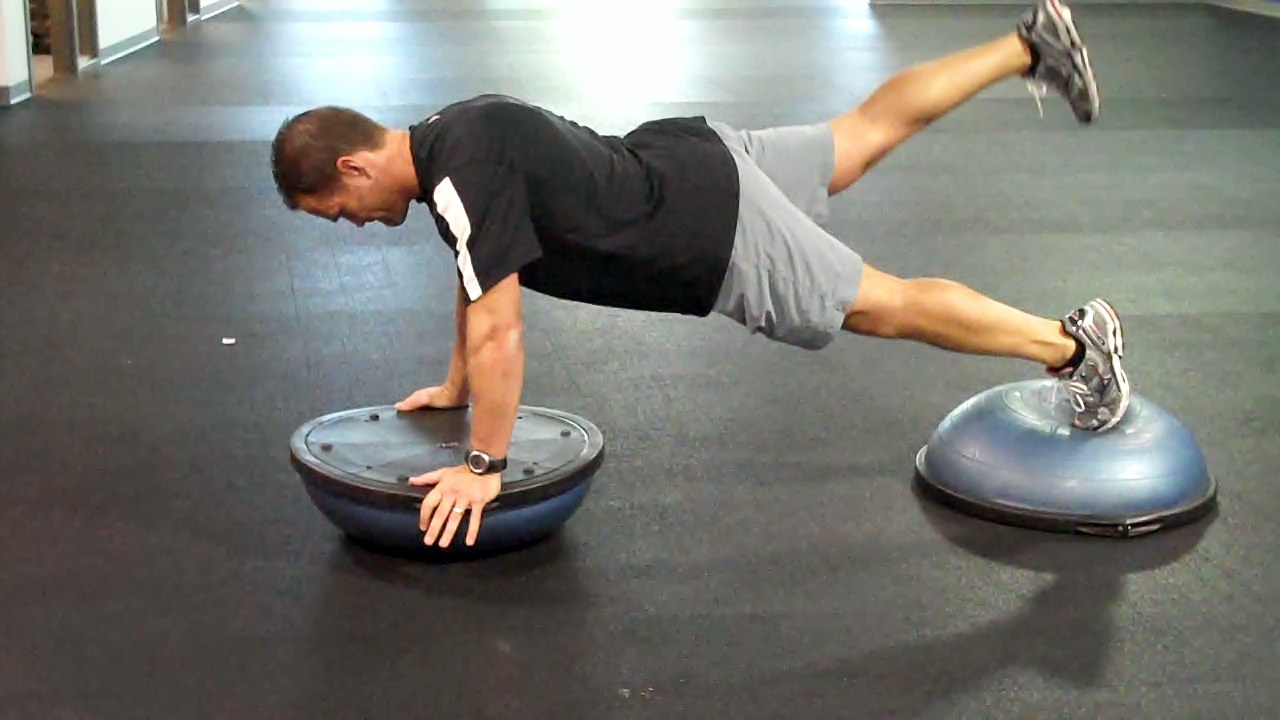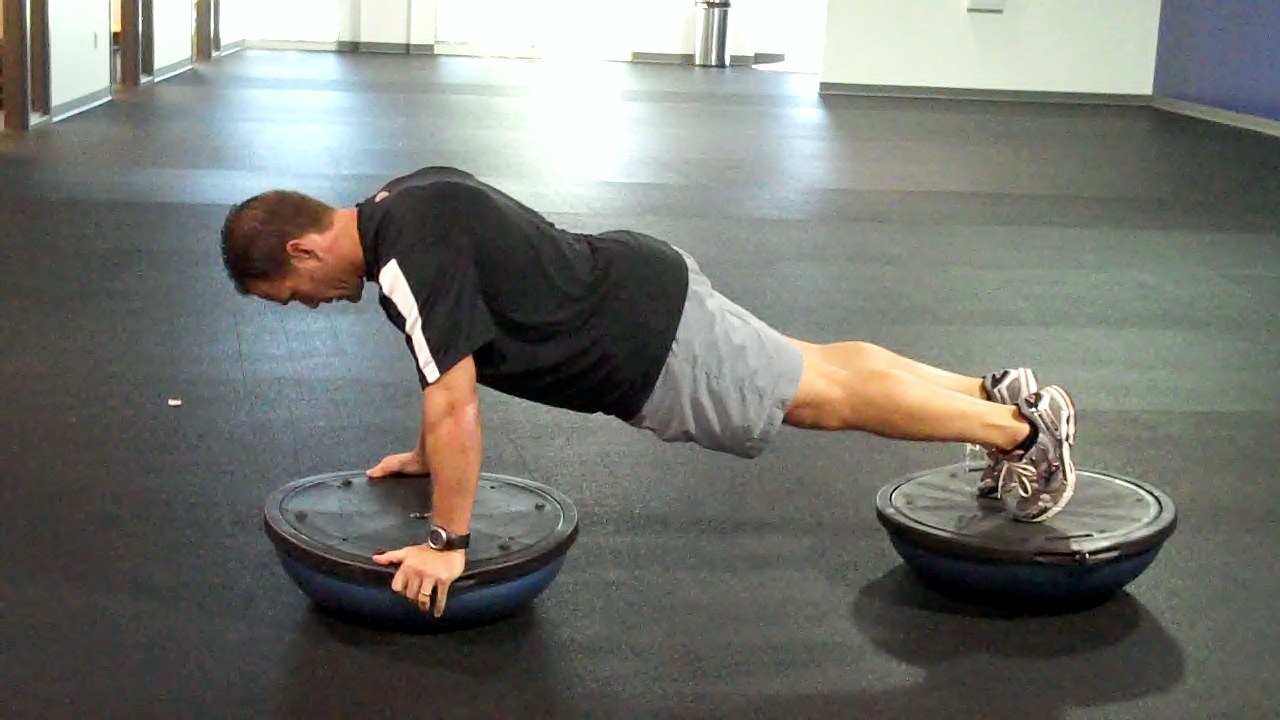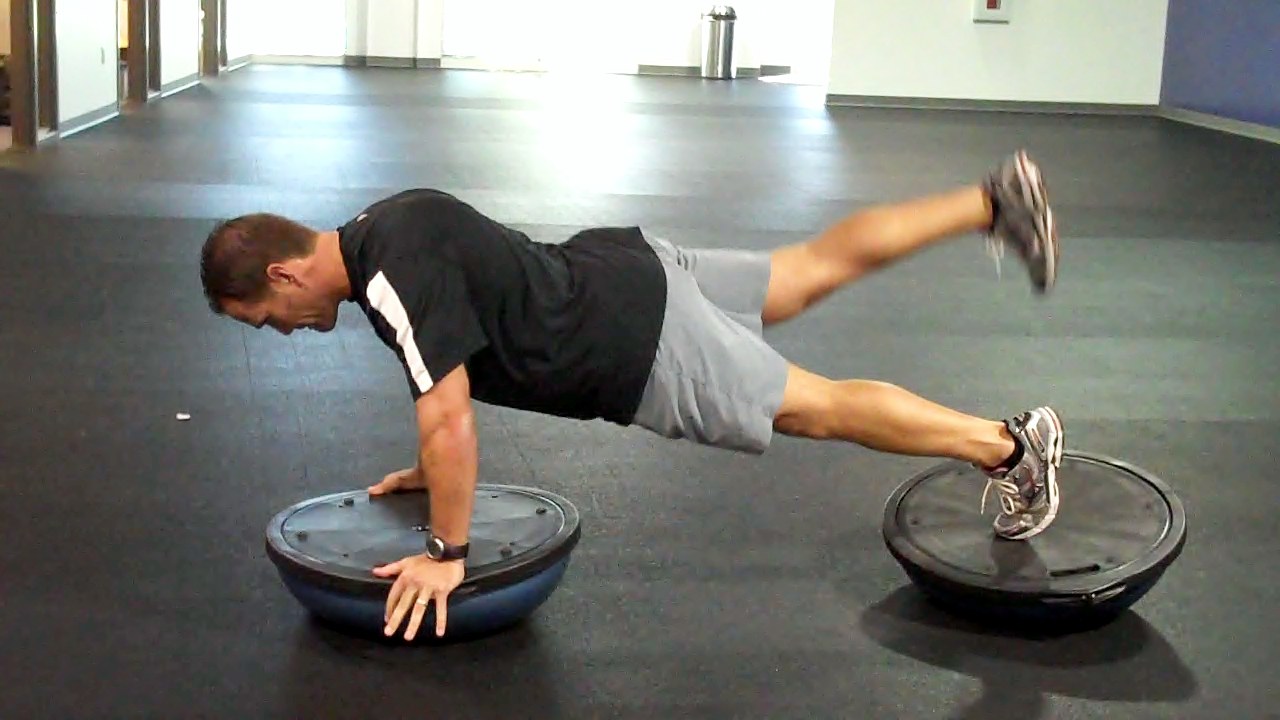![E-News-Column_2[1] E-News-Column_2[1]](https://cms-static.wehaacdn.com/fit--pro-com/images/E-News-Column_2-1-.2515.0.0.jpg)
Execution:
 You will need two BOSU Balance Trainers for this exercise. The BalanceTrainer beneath the upper body will be dome side down throughout. Initially,begin with the Balance Trainer beneath the feet dome side up.
You will need two BOSU Balance Trainers for this exercise. The BalanceTrainer beneath the upper body will be dome side down throughout. Initially,begin with the Balance Trainer beneath the feet dome side up.
Place the hands on the outside edges of the Balance Trainerat approximately 9 and 3 o'clock. Next, position the toes on the centerportion of the Balance Trainer. Focus on attaining a stable and straight lineposition with the body, making sure your hands are beneath the shoulders.
Because I am naturally hyperlordotic, it may appear that Iam not maintaining a good neutral spine, but you should attempt to be in aneutral spine position by drawing your abdominals in just enough to accomplishthis.
Once you master this phase, you can significantly increasethe difficulty by position the Balance Trainer beneath the feet to dome sidedown. This version requires more coordination, stability and body control. Whilethe Balance Trainer beneath the feet will not stay perfectly level, aim forminimal perturbation during the lifts. You will likely need to slow yourcadence and consider raising the leg a shorter distance to perform thissuccessfully.
 | ; |
Once in a stable neutralspine position, slowly lift one leg up (keep the foot dorsiflexed throughout),pause at the top and then slowly lower back down. A cadence of 1/1/1 or even2/1/2 will be fine. You will alternate legs during the exercise, while keepingthe Balance Trainer beneath the upper body level and still. Perform 1- 3 setsof 8-15 reps on each side.
 |  |  |
Application:
This exercise is very effective for improving shoulder and corestrength/stability. Additionally, you will be activating the gluteus maximusand facilitating hip extension. This activity is a great drill for overheadathletes such as swimmers, throwers, volleyball players and general clientelesuffering from rotator cuff or general shoulder dysfunction related to poorscapular stabilization.
If you have concernsabout a client's ability to do this activity, begin with the feet on the floorsince it is a more stable environment and assess his/her capacity to executethe movement properly. General precautions/contraindications include clientswith pain during the movement, gross shoulder instability or a history orrecurrent subluxations/dislocations. You want to make sure they have beencleared by a medical professional to do higher level stability exercises suchas this.
Additionally, be sure to observe form throughout and modifyor discontinue the activity if the client is unable to maintain a good neutralspine position or control the displacement of the Balance Trainer.
Brian Schiff, PT, CSCS (www.brianschiff.com) is a licensed physical therapist, respected author and fitness professional. He became a Certified Strength and Conditioning Specialist (CSCS) in 1998. Currently, he serves as the supervisor at the Athletic Performance Center in Raleigh, NC. Brian presents nationally at several professional conferences and seminars on injury prevention, rehab and sport-specific training.
















